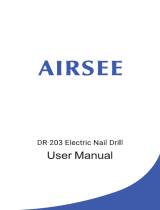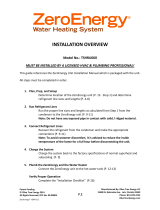
If you need service or assistance,
we’ suggest you follow these five steps:
1, Before calling for assistance...
t’eiformance problems often result from little things
+‘.>:A can find and fix yourse!f without tools of any kind
Ii your refrigerator will not operate:
* ‘s the electric cord plugged Into a live circuit with
sroper voltage? [See page 4.)
= rluve you checked your home’s main fuses or circuit
oreaker box?
l
:s the Refrigerator Control ON7
If there is a rattling or jingling noise or unfamiliar
sounds:
l
Is something on top or behlnd the refrigerator making
.1oIse when the refrigerator is running?
* New features on your new refrigerator make new
>ounds You may be hearing air flowing from the fans,
Timer clicks for the defrosting cycle, or defrost water
lralnlng in the defrost pan
If your ice maker will not operate:
l
Yas the freezer had enough time to get cold? With a
‘lew refrigerator, this might take overnight
* 1s The signal arm ON. .In the down position7
= is the water valve turned on? Is water getting to the ice
maker?
If there is water in the defrost pan:
l
Thts is normal in hot, muggy weather. The pan can
even be half full. Make sure the refrigerator is level so
the pan does not overflow.
If the light does not work:
0 Have you checked your home’s main fuses or circuit
breaker box7
l
Is the power supply cord plugged into a live circuit
with the proper voltage? (See page 4.)
If a bulb is burned out:
* 5ee Instructions for changing light bulbs on page 8.
:ise appliance bulbs only
If the motor seems to run too much:
* 1: the condenser free of dusr and lint?
l
Gin hot days, or if the room IS ‘warm, the motor naturally
r.~ns ionger.
* I’ +*e door has been opened a lot, or if a large amount
,; i
Food has been put In the motor will run longer to
cool down the interior
Remember: Motor running time depends on different
‘hilgs, number of door openings, amount of food
5toted temoerature of the room, setting of the controls,
koar iew refrigerator may be larger than your old
-nc so I? has more space to be cooled. It also has a
egular freezer instead of a frozen food compartment.
qii this means better refrigeration and may require
‘ncre running time than your old one,
2. If you need assistance?..
Call Whirlpool COOL-LINE * service assistance tele-
phone number. Dial free from anywhere in the U.S.:
1-800-253-1301
and talk with one of our trained Consultants. The COn-
sultants can instruct you in how to obtain satisfactory
operation from your appliance or, if service is neces-
sary, recommend a qualified service company in your
area.
3.
If you need service?..
4-P
whi+l
LY
01
Whirlpool has a nationwide network
1 of franchised TECH-CARE” service
, companies. TECH-CARE service
TE&/-CA,QE technicians are trained to fulfill the
F!NCH~SEDSERV~CE~J product warranty and provide after-
warranty service, anywhere in the United States. To lo-
cate TECH-CARE service in your area, call our COOL-
LINE service assistance telephone number (see Step 2)
or look in yourtelephone directory Yellow Pages under:
Call our COOL-LINE service assistance telephone
number (see Step 2) and talk with one of our Consul-
tants, or if you prefer, write to:
Mr. Robert Stanley
Division Vice President
Whirlpool Corporation
2000 M-63
Benton Harbor, MI 49022
5.
If you need FSP’:
replacement parts?..
FSP” is a registered trademark of Whirlpool Corpora-
tion for quality parts. Look for this symbol of quality
whenever you need a replacement port for your
Whirlpool appliance. FSP replacement parts will fit
right and work right, because they are made to the
same exacting specifications used to build every new
Whirlpool appliance.
To locate FSP replacement parts in your area, refer to
Step 3 above or call the Whirlpool COOL-LINE service
assistance number in Step 2.
*If you must call or write, please provide: model
number, serial number, date of purchase, and a com-
plete description of the problem. This information is
needed in order to better respond to your request for
assistance.


















